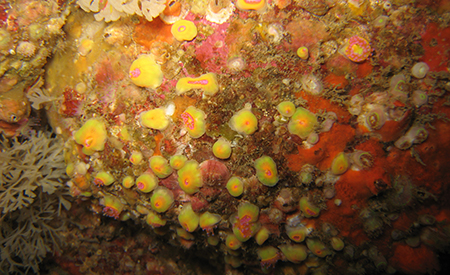/FEM/ABIOP
Type of resources
Available actions
Topics
Keywords
Contact for the resource
Provided by
Formats
status
-

The macrofouling qualification and quantification protocols were extracted from 64 public documents (33 scientific articles, 1 book chapter, 22 internal reports, 4 internship reports and 4 theses) presenting studies conducted in France (n = 40), Europe (n = 16) and the world (n = 8).
-

During the ABIOP project launch meeting, the consortium agreed to add a task to the project aimed at identifying the challenges of biocolonisation in an ORE context. This additional work is indeed necessary because it allows the organisation, updating and presentation of the reflections undertaken by biofouling experts from various industrial and research entities and federated by FEM, for several years on this topic.
-

To reduce the number of interventions and maintenance operations, it is necessary to monitor the proliferation of marine fouling in real time and over a long period. This is why it is necessary to have an in situ optical video system that is protected for as long as possible against biocolonisation.
-

Database of images collected at ABIOP monitoring sites (UTLN = Mola buoy offshore Banyuls, SEMREV = special marks east and north, UN = biocolmar buoy) + report on biofouling characterisation (rapport_taxo_ABIOP_provisoire)
-

Measurement of the diameter of biocolonised moorings and biofouling composition at T+6 months of immersion.
-

Excel database containing the information collected for the atlas (45 sources for the French maritime façades + 24 on a global scale) and shapefiles for the cartographic representation of the available data
-

Comparison of multiparameter probes
-

This report focuses on two important parameters for biofouling image analysis: the artificial light and the distance to the structure. The first section presents the available tool that was already deployed in several studies in link with industrial needs (O’Byrne et al., 2018c) and the laboratory equipment. Section 2 focuses on the automatic segmentation algorithm and the indicators of quality of assessments. Finally section 3 introduces configurations that were tested and the key results.
-

Backup of the data used for characterising the different biofouling monitoring protocols in an excel file.
-

Monitoring data on biomass (fresh weight in air and water), biovolume, thickness.
 Catalogue PIGMA
Catalogue PIGMA